- Industry insights
- People in tech
- Product development
- Tech trends at BEECODED
- 23 May 2025
Traditional Software vs. SaaS: Which model fits your business in 2025?
The differences between traditional software and SaaS
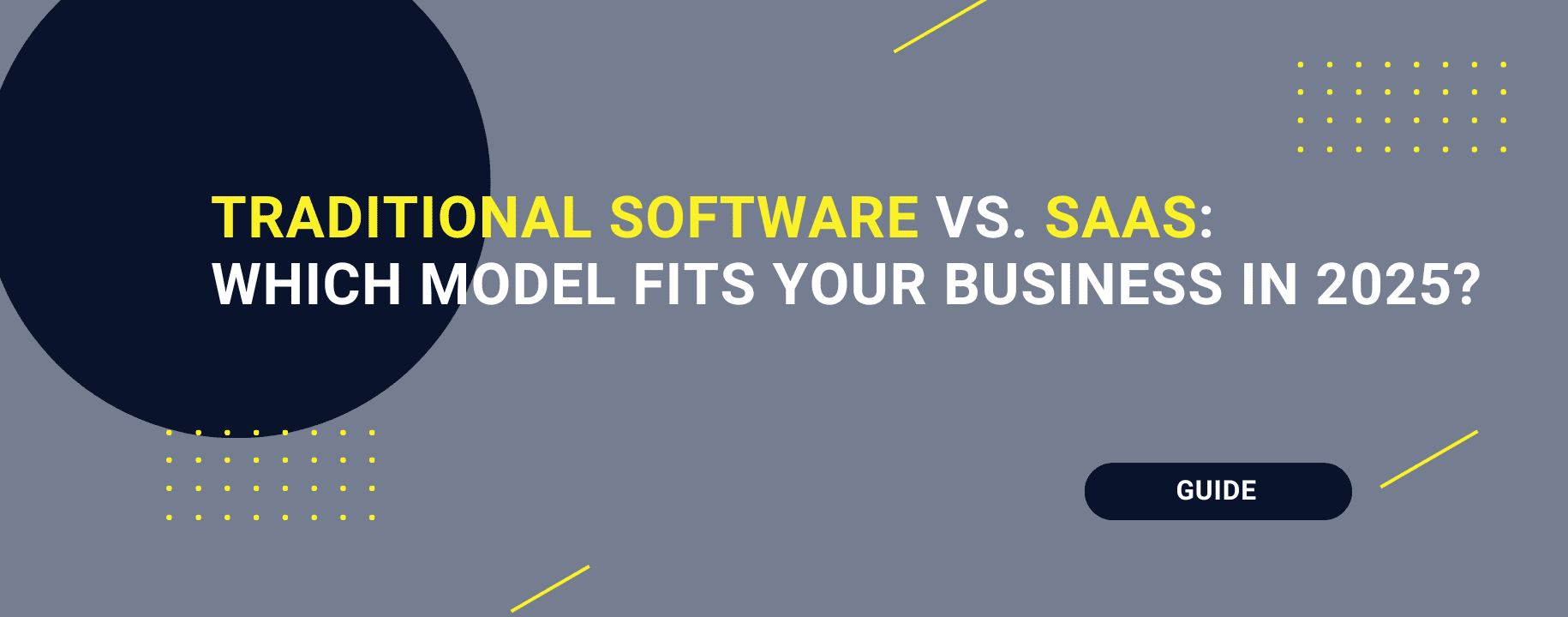
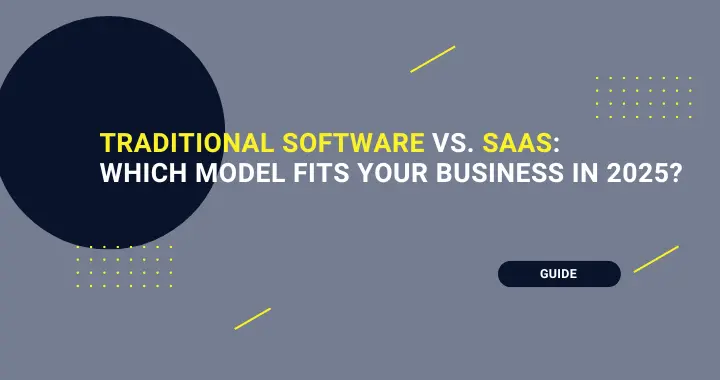
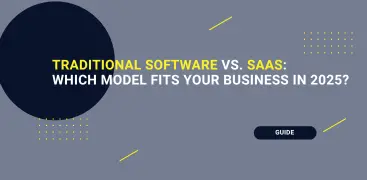
Table of contents
- What is traditional software?
- What is SaaS (Software as a Service)?
- Traditional software vs SaaS: key differences
- Real-world examples where SaaS outperformed traditional
- When traditional software still wins
- When SaaS is the smarter choice
- BEE CODED’s hybrid development expertise
- Conclusion: Which one fits your growth strategy?
Contributors

If you’re here, you’re probably wondering which option is better for your business: the traditional software business model or the SaaS development option?
First of all, it’s important to know that both come with their own features and advantages, which we’re going to discuss in this article.
Secondly, an informed decision is always the best decision. In this article, we aim to offer a clear understanding of the differences between traditional software vs. SaaS so you can confidently choose the right option for your growth strategy in 2025.
What is traditional software?
Traditional software, also known as licensed software, is installed and run locally, directly on your company’s servers and IT equipment.
The company buys a perpetual license (hence the name licensed) for the software and takes care of installation, maintenance, and updates.
A good example here is SAP, used by many companies for internal resource management or accounting.
Features of traditional software:
- Licensing – you pay once for the license, with additional costs for upgrades.
- Infrastructure – you need your own servers and dedicated IT equipment to run the application.
- Control – the company has total control over data and configurations.
- Costs – large initial investment, plus ongoing costs for maintenance and support.
What is SaaS (Software as a Service)?
When it comes to SaaS (Software as a Service), you do not need to install the app on your computer, as the software is hosted on an external system (cloud), and you access it directly through an online platform from any device with an internet connection. Unlike traditional software, which requires a license purchase, SaaS operates on a subscription model: users pay a periodic subscription fee and benefit from automatic updates.
A concrete example here would be Google Workspace. If you want to use Google Docs in your company, you don’t need to install anything on your computer. All you need is an account and an internet connection.
If you want to learn more about the features of SaaS applications, read our article here.
Traditional software vs SaaS: key differences
Below, we have summarized the main differences between traditional software and SaaS for a complete overview of the two models:
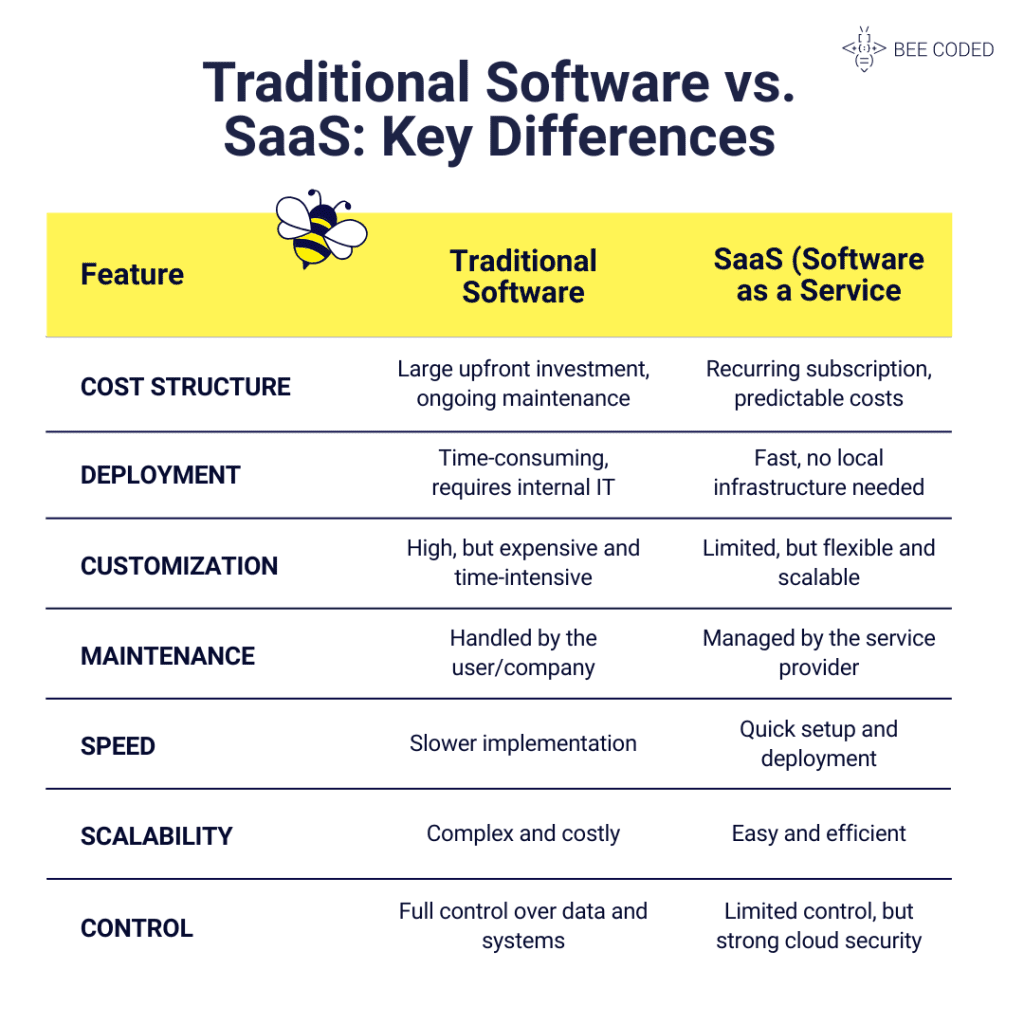
Real-world examples where SaaS outperformed traditional
Domino’s: taking a slice of SaaS
The well-known pizza chain Domino’s switched to a SaaS model by replacing its IT systems with Atlassian’s Jira Service Management. This change allowed the company to automate internal processes and improve deliveries across its 3800 locations worldwide.
Breville: mixing smart tools into the workflow
The home appliance brand Breville moved from Microsoft Project to Jira Work Management and Confluence. This transition cut costs to less than half compared to previous solutions and improved collaboration between teams.
Loom.ai: rapid success with a small SaaS team
Loom.ai, a company specializing in technology, has achieved an annual recurring revenue of $7.5 million with a SaaS team of just five people.
When traditional software still wins
As we’ve seen before, the SaaS model comes with many advantages. However, there are certain situations where it is preferable to opt for traditional software.
1. Compliance-heavy industries – here we are referring to industries such as the financial sector (e.g., banks) or health sector (e.g., hospitals). In these industries, information is highly sensitive; therefore, on-premise software may be a better choice.
2. Internal-only tools – some companies have very specific needs and require custom-built tools that are used exclusively within the organization. If you count yourself among them, choose custom software development installed on your company’s server.
When SaaS is the smarter choice
Choose SaaS development services if you are in one of the following situations:
- Startups and remote teams – Why? Because you get quick access to important tools without a big investment.
- Need for rapid deployment. Why? Because with SaaS solutions, time to market is shorter.
- Need for ongoing scaling flexibility. Why? Because you can quickly adjust resources based on demand.
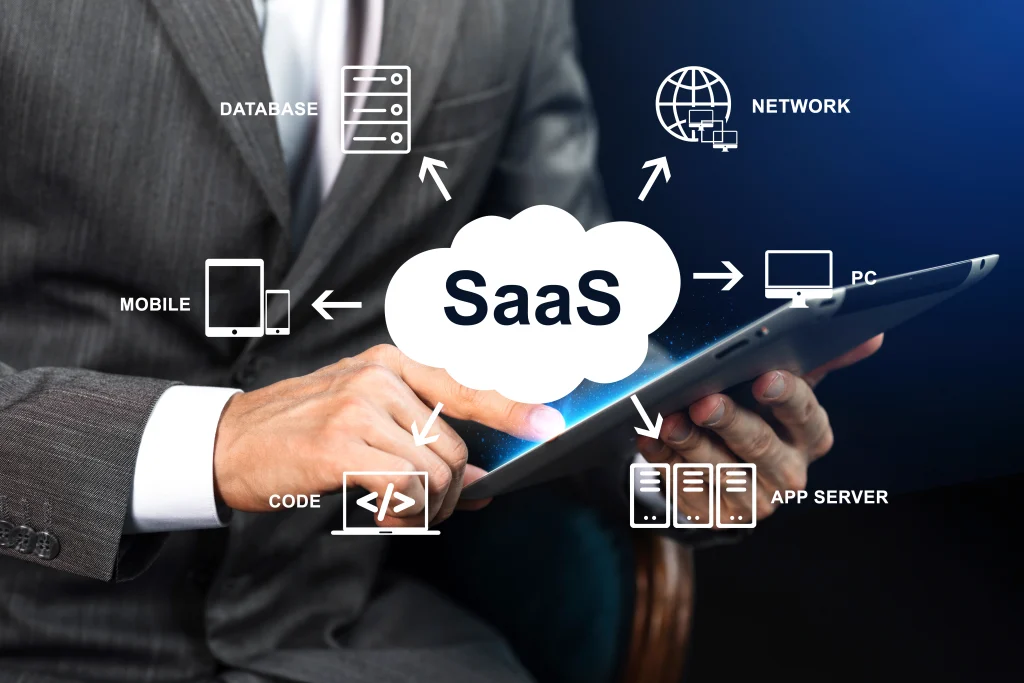
BEE CODED’s hybrid development expertise
At BEE CODED, we take a neutral, advisory approach. What matters most to us is that you choose the solution that best fits your business. Thus, we build SaaS, on-premise, or hybrid applications, all tailored to your specific needs.
Why software outsourcing in Romania? Because we offer high expertise in software development and engineering, reliable long-term business partnerships, and smooth communication with development teams.
Conclusion: Which one fits your growth strategy?
SaaS vs. traditional software: which one is right for your business? We’re here to help you make the best choice by sharing our expertise in developing tailored software solutions.
Get in touch with us today, and let’s find the perfect fit for your business.
Outsourcing vs. In-house Development: Why Romania is the Best Middle Ground
The Talent Pool in Romania: Why Global Companies Hire Developers Here
The Real Cost of Software Outsourcing: Why Romania Offers the Best ROI